The truth about cancer and essential oils
Cancer is not a death sentence. Not only is there hope, there are several natural solutions that people have successfully implemented for literally centuries! And the truth about essential oils and cancer is this: Research strongly suggests that oils can help not only prevent, but treat cancer and its debilitating side effects.
It's important to remember that the peer-reviewed articles discuss the success clinical researchers have experienced in using various essentials oils to prevent, stop and even reverse the growth of various cancer lines in animal and human cell studies. It is important to keep in mind that a vast majority of these studies are in vitroThis means "outside the body" – or in the laboratory. — based off of cells in a petri dish.
As researchers learn more about the specific ways essential oils affect cancer and how to translate that into practical use, what – if anything – should we do in response?
Essential oils are incredible substances that have a role in all of our lives, and it’s important to pay attention to the many established uses and heavy potential in the relationship between cancer and essential oils.
Five Essential Essential Oils
1. Frankincense
The king of essential oils, Frankincense is revered for its ability to rejuvenate skin when applied topically, to promote cellular health and immunity, and produces a healthy inflammatory response when taken internally, among other benefits.
2. Lavender
The most important health benefits of lavender include its ability to relieve stress, improve mood, promote restful sleep, lower skin irritation, prevent infections, reduce inflammation, eliminate dandruff, and soothe stomach bloating.
3. Myrrh
This essential oil is well known for its ability to cleanse the mouth and throat. Myrrh also promotes a youthful-looking complexion and offers a soothing sensation to the skin. Also, try diffusing Myrrh oil to promote emotional balance and well-being.
4. Peppermint
Ancient Egyptians cultivated and used peppermint leaves for indigestion. Peppermint also is frequently used to reduce inflammation of the mouth or throat. It can help with digestive problems — gas, bloating and nausea, morning sickness, and stomach cramps.
5. Thyme
The most active ingredient in thyme is thymol, which helps prevent fungal and viral infections (this reduces strain on the immune system). Thyme contains high levels of Vitamin C, which stimulates the production of white blood cells — the first line of defense in the body’s immune system.
What are Essential Oils, and How Were They Used Historically
As the fragrant oil found within various parts of a plant, typically the leaf or flower, essential oils are also called “volatile oils,” referring to the way in which they are released. Modern essential oils are usually collected when the plant matter is distilled, triggering the release of the essential oil.
This exact process is somewhat new in light of the course of our overarching history with herbs and botanicals. But, as you can imagine, those volatile oils are obviously present in all plants and were no doubt released and included in the earliest of infusions and preparations. Just because we can isolate that exact compound now doesn’t mean that previous generations had not enjoyed the benefits to some extent.
With that in mind, we can look to ancient uses of infused oils, primitive distillation, and general appreciation of the plants that we now use specifically for the essential oil, and that history helps to guide our growing knowledge of the mechanisms of the oils.
One of the most long standing sources of medicine in the world is the practice of Ayurvedic medicine in India, extending back long before Hippocrates. Ayurveda combines many therapeutic techniques, including essential oils as aromatherapy, and has proven itself in recent research. According to a 2013 study,
Based on comprehensive review of ancient vedic literature and modern scientific evidences, Ayurveda based interventions…may act as an important adjuvant to chemo-radiotherapy and enhance the quality of life of cancer patients. [1]
This is, of course, just one example of historic – even ancient practices retaining efficacy today, and studies like these are a constant encouragement to those of us pursuing natural treatments or support.
It’s also important to note that Ayurveda uses essential oils far differently than modern aromatherapists, who will, in turn, each use them differently from each other. History may be a guide toward essential oils, but it’s up to us to determine how and why we will use them now.
How Essential Oils are Used Today
Spend five minutes online and you know that essential oils are viewed and used in many different ways. Some of that goes back to our growing understanding of their specific actions. Some of it is personal preference and use.
The interesting thing about aromatherapy is that, though it doesn’t have to smell pleasant to have therapeutic benefits, individual aversions and emotional scent connection can negate some of the benefits. So essential oil use can be truly personal!
Traditional use of essential oils directly are for the aroma, hence the term aroma-therapy, coined in the last century. Ancient use of infused oils and essential oils included skin treatments and bathing as well as incense and burning for the aroma.
Modern uses of essential oils range from historically-derived aromatherapy and baths to topical formulations, diluted (and sometimes undiluted) topical applications, and internal use. As an increasingly popular arm of natural health, you’ll find contradicting recommendations on topical and internal use guidelines and safety. So, as you are learning oils and how to use them, remember two things: first, always dilute your oils; second, consult with a professional if you are unsure of what to do or how to do it safely.
What Research Tells Us About Essential Oils
When looking at essential oils through the lens of potential cancer treatment, remember that researchers are working through all of these variables in use, as well, and it’s important to note the type of use that research indicates before translating it directly to use.
Most research, to this point, has been conducted in vitro, or in a petri dish. Scientists are working through the ways that specific oils do or don’t affect specific kinds of cancer cells. Once a substance is found to have promise in vitro, steps are taken to test it in animals, then eventually in humans. But dosing, application, and efficacy are no small feat to figure, and this is a very long and precise process.
A brief consideration of the variables to be considered when finding or confirming remedies and treatments gives us a new appreciation for all that these researchers are able to do for us!
In light of this strenuous process, as you’ll see when we dive into specific oils in a moment, there is a lot that research can tell us about essential oils and cancer, and there is a lot that it cannot tell us. But just as we let ancient uses guide us toward isolated essential oils themselves, we can let research guide us toward specific essential oils that may help us in the battle against cancer.
Perhaps someday we’ll see in science exactly how to use these oils efficiently and directly against cancer. Until then, using known, safe applications of these promising essential oils, we can at least take steps to introduce the body to these powerful substances.
Essential Oils and Cancer Research
These are a few of the studies from selected essential oils that discuss benefits to cancer patients:
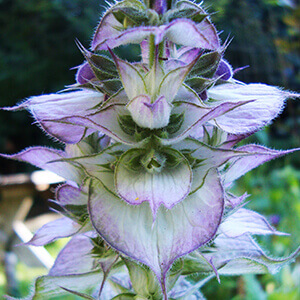
Clary Sage
A primary component of clary sage essential oil, sclareol, has shown some promising anti-cancer effects in lab tests. Over the last couple of decades but as recently as this year (2015), studies have emerged that analyze sclareol's effect on cancer cells. With the caveat that these benefits occurred within the confines of lab cultures and dose adjustments, sclareol may have an impact on the way that cancer cells proliferate, and it could help induce apoptosisA type of cell death in which a series of molecular steps in a cell lead to its death. This is one method the body uses to get rid of unneeded or abnormal cells. The process of apoptosis may be blocked in cancer cells. Also called programmed cell death. (cancer cell death). [2]
While this does not tell us how much potential sclareol has to directly treat cancer — and it's exciting to think about where that could go one day! — it is a common thread that we see in many antioxidant-rich essential oils. This is especially interesting for clary sage, which also contains high values of phytoestrogens, which are commonly avoided in those who have certain breast cancer. With potential anti-cancer benefits built into clary sage, you have to wonder if it is meant to work as a whole package that ultimately delivers only benefits.
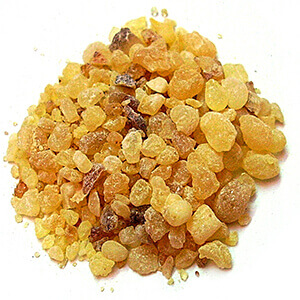
Arguably the most potent medicinal EO out there, recent research studies suggest that frankincense not only kills cancer cells, but it also promotes health and vitality in neighboring non-cancerous cells.
While we do know that the various forms of frankincense (essential oils, extracts, pure resin, etc.) have the potential to fight cancer, much is left to be understood, making this a controversial topic in the natural health and research world.
Current research demonstrates anti-mutagenic and apoptotic (programmed cell death) abilities. Though the results have occurred in lab tests and we have yet to see how to best replicate these results in active cancer in humans, the demonstrated results remain. Researchers found that boswellic acids are “cytotoxic to ovarian cancer cells at pharmacologically achievable concentrations” and “may form the basis of a novel anticancer treatment for ovarian cancer, perhaps alongside conventional chemotherapy. [3]” However, there is a serious debate as to whether frankincense oil contains boswellic acids (BAs).
Regardless if it's because of the BAs or some other chemical in the essential oil, studies continue to emerge, demonstrating similar effects on bladder[4], breast[5], colon[6], skin[7], stomach[8], and pancreatic cancers[9].
For those who have added frankincense essential oil to their cancer care plan, the benefits may go beyond anti-tumor effects. Particularly, in helping manage the side effects of conventional treatments, which can be more painful and difficult than the symptoms of cancer itself. Brain cancer patients, for example, sometimes experience swelling in the head called cerebral edema after their tumors have been removed. Steroid treatment is common but also associated with difficult side effects and complications.
Frankincense, on the other hand, has shown remarkable effects against this particular problem. In 2011, a clinical trial evaluating 44 individuals monitored frankincense as a remedy for cerebral edema. In 60 percent of the patients, the swelling was reduced by 75 percent or more. The concluding remarks called for frankincense to be prescribed for cerebral edema in these circumstances, avoiding the struggles of steroid therapy [10].
The essential oil has also been used with much success to treat issues related to digestion, the immune system, oral health, respiratory concerns and stress/anxiety. [11, 12]
Here is a testimony about Skin Cancer and Frankincense:
Just wanted to share more about Frankincense. My Dad tried it for his COPD and was very surprised with the effects. We were talking about what he called cancer on his face and top of ears and he was saying that he'd have to go have it cut off again. I just mentioned that he try some of his Frankincense. It's been about a week and half and last night he started telling me how he was telling his friend that he had these things on the side of his face and on top of his ears. THEN, he said “I started putting my oil on them and one is gone and the other I can barely feel”…………………. he is starting to trust and believe in the oils………..He is a very cautious man so I was a little surprised he even tried it. Sometimes we just have to be patient. (1)http://stopcancer.com/EssentialOilsTestimonies.htm
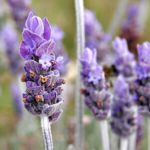
A recurring theme in any natural health discussion, antioxidantsProtects cells from damage caused by free radicals (unstable molecules made by the process of oxidation during normal metabolism). Free radicals may play a part in cancer, heart disease, stroke, and other diseases of aging. Antioxidants include beta-carotene, lycopene, Vitamins A, C, and E, and other natural and manufactured substances. are, in effect, the super healers that our culture needs. The free radicals created by toxins, pollutants, chemicals, and even stress are the culprits for a cascade of cellular damage, immune inhibition, and limitless health risks – including chronic illness and cancer.
If free radicals are the villain, antioxidants are the hero.
The body itself creates antioxidants in the form of the enzymes glutathione peroxidase (GSH-Px), superoxide dismutase (SOD) and catalase (CAT), among others. But we expose our bodies to an onslaught of free radicals and drain our bodies in sedentary lifestyles, so our natural production is not always sufficient.
We've already seen some super antioxidants, like clove essential oil, and lavender joins the ranks as a powerful natural antioxidant support.
Chinese researchers observed that lavender essential oil would upregulate all three major antioxidant enzyme levels in mice within the first day of treatment. [13] In Romania, researchers noted similar activity using inhaled lavender for an hour each day and, according to the study, “Taken together, our results suggest that antioxidant and antiapoptotic activities of the lavender essential oils are the major mechanisms for their potent neuroprotective effects against scopolamine-induced oxidative stress in the rat brain,” that can lead to severe illness and cancer. [14]
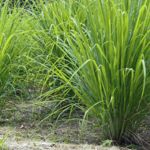
Lemongrass
To date, seven studies have evaluated lemongrass' potential connection with cancer [15].
In 2009, a study was published that evaluated the essential oil from a lemon grass variety of Cymbopogon flexuosus for its in vitro cytotoxicity against 12 human cancer cell lines, as well as in vivo anticancer effects on mice. The results were quite promising, as researchers discovered various mechanisms of how the oil killed the cancer lines.
“Our results indicate that the oil has a promising anticancer activity and causes loss in tumor cell viability by activating the apoptotic process as identified by electron microscopy. [16]”
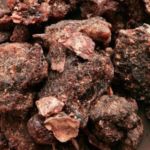
The ability myrrh essential oil has in healing cancer is becoming a popular topic in the industry. One of the most thorough studies on the topic was published in the journal Oncology Letters in 2013, and this is what they discovered about frankincense and myrrh oils:
“The effects of the two essential oils, independently and as a mixture, on five tumor cell lines, MCF-7, HS-1, HepG2, HeLa, and A549, were investigated using the MTT assay. The results indicated that the MCF-7 and HS-1 cell lines showed increased sensitivity to the myrrh and frankincense essential oils compared with the remaining cell lines. In addition, the anticancer effects of myrrh were markedly increased compared with those of frankincense, however, no significant synergistic effects were identified. [17]”
Recommendation: For a truly Biblical combination, use frankincense and myrrh essential oils together for a synergistic blend of antimicrobial benefits.
Notably, these two resins are generally prescribed simultaneously in traditional Chinese medicine. They are used primarily to treat blood stagnation and inflammatory diseases, as well as for the relief of swelling and pain [18]. Even though there was no synergism noted regarding cancer, “A previous study identified that the combination of frankincense and myrrh oils exhibited synergistic effects on harmful bacterial infections Cryptococcus neoformans and Pseudomonas aeruginosa. [19, 20]
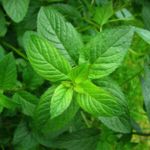
Peppermint and Spearmint
According to a 2014 article in BioMed Research International, peppermint and spearmint are highly effective at helping cancer patients manage side effects from cancer itself — as well as from conventional treatments. Taken directly from the article, the ability of these precious oils (as well as the others mentioned below) to combat debilitating and annoying cancer side effects is literally amazing:
- “Cancer patients suffer from different side effects which can be preferentially reduced by alternative methods. EOs are used in the aromatherapy for reducing the agony of brain cancer patients. [21] EO is efficient in depression and reduction of anxiety in cancer patients. [22] Cancer patients undergoing chemotherapy, one of the most frequently used treatment method in cancer, are prone to various side effects. [23] These are nausea and vomiting. Mentha spicata [spearmint] and M. piperita [peppermint] have been found to be effective in overcoming these emetic conditions (chemotherapy-induced nausea and vomiting, CINV) along with the reduction of expenditure on treatment in the cancer patients undergoing chemotherapy. [24]
- EOs of Leptospermum scoparium and Kunzea ericoides were reported to prevent mucositis in the head and neck cancer patients undergoing radiotherapy when used in the preparation of mouthwash. [25]
- Some cancer patients having metastatic tumorigenic ulcers of skin develop necrosis and malodour. [26] Patients suffering from such malodour were reported to have improvement in their state on treatment of these ulcers with the mixture of EOs having eucalyptus, melaleuca, lemongrass, lemon, clove leaf, and thyme on a 40% ethanol base. [27]
- Lavender EO is widely used in aromatherapy and is found to be beneficial in reducing the distress in cancer patients. [28] Hence, EOs serve as the valuable preparations in amelioration of the side effects and sufferings of the cancer patients.”
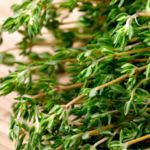
Thyme
In a 2010 article from the journal Molecules, cancer cells were evaluated to see how they could stand up against 10 powerful essential oils. Thyme was one of those oils, and it stood out from the crowd as most beneficial against the cells of the prostate, lung carcinoma, and breast cancers. [29] While it can't be stated enough that these studies are preliminary, I'm filled with hope for a future where naturally occurring products replace toxic chemicals for cancer treatment and — dare we hope? — cures!
As one of the top herbs for estrogen binding, thyme may be able to help the body balance and regulate hormones. [30]
Incidentally, this is not the only time we have seen a potential estrogenic herb noted for its anticancer potential, as well. Because cancer frequently holds receptors for estrogen, thus being fed by anything estrogenic, we often suggest avoiding estrogen if you have or are at high risk for cancer. But with potent anticancer potential, we may one day find that what we thought were cancer-causing plants and foods were really giving our bodies a blueprint for fighting cancer on its own
The Power of Essential Oils
Many people are cynical about essential oils until they begin to learn that, historically, essential oils addressed many ailments for thousand of years. Essential oils are powerful plant-based chemical compounds that, unlike patented prescription drugs, your body easily absorbs and utilizes.
In fact, even if you’re a cancer patient going through chemotherapy, I urge patients to incorporate other natural healing into your regimen — including essential oils.
It’s not an all or nothing thing. It’s not like chemo or oils. No, it could be both. And I’m not promoting the conventional model unless that’s what you want to do. But if you’re doing conventional treatment we have seen chemo along with essential oils make the chemo even more effective. It’s unbelievable!
Skin Cancer – Frankincense and Other Essential Oils
Here is a testimonial for Frankincense Oil:
Just wanted to share more about Frankincense. My Dad tried it for his COPD and was very surprised with the effects. We were talking about what he called cancer on his face and top of ears and he was saying that he'd have to go have it cut off again. I just mentioned that he try some of his Frankincense. It's been about a week and half and last night he started telling me how he was telling his friend that he had these things on the side of his face and on top of his ears. THEN, he said “I started putting my oil on them and one is gone and the other I can barely feel”…………………. he is starting to trust and believe in the oils………..He is a very cautious man so I was a little surprised he even tried it. Sometimes we just have to be patient. (1)http://stopcancer.com/EssentialOilsTestimonies.htm
Frankincense is also anti-inflammatory.
Several testimonials for frankincense oil have been shared with us. Whenever you talk about “essential oils,” however, the FDA is currently harassing the #1 vendor of essential oils so we cannot currently mention their name. But they create therapeutic-grade essential oils, not the perfume-grade oils normally found in retail and wholesale distribution.
(Note: Some health practitioners import high-quality essential oils made in other countries.)
The current protocol for treating skin cancer is the following (using a 1/2 and 1/2 mixture of the two oils):
- Frankincense with Idaho Balsam Fir (three days);
- Frankincense with Tsuga (three days);
- Frankincense with Ledum (three days);
- Frankincense with Lavender (three days);
- Frankincense with clove, which may make the skin burn, so skip this step for cancer on the face (three days);
- Frankincense with Sandalwood (three days); 7) Repeat cycle as needed.
The exact number of times the oils should be put on the skin cancer is up to the patient and their situation but may range from three to 12 times a day.
Testimonials also exist for a mixture of frankincense, myrrh, and elemi, which all belong to the same botanical family (Burseraceae).
For a brief list of essential oils, see:
Supercharging This Treatment
Superficial skin cancer should be simple to treat with the products mentioned above. However, for those with more severe skin cancer which goes deep beneath the skin, a complete treatment plan should be devised using one of the complete treatment protocol articles.
An alternative cancer treatment should be a complete treatment protocol. Do NOT forget to study the complete treatment protocol for Stage I, II and III cancer patients and the complete treatment protocol for Stage IV cancer patients:
Treatment For Stage I, II and III Cancer Patients
Treatment For Stage IV Cancer Patients
Gut Health
Experts have a few areas of concern when it comes to gut health. These are areas we’re familiar with but that we may not see as a reason for alarm.
- Antibiotics
More than 2 million people are infected and more than 25,000 people die of antibiotic-resistant bacteria every year. This is a huge public health concern because it’s only going to get worse. The more bacteria are exposed to antibiotics, the greater the chance of new strains that are resistant to those antibiotics.
In 2011, drug makers sold 30 million pounds of antibiotics for livestock. In fact, antibiotics made up about 80 percent of sales that year. Feeding animals low dosages of antibiotics create a better breeding ground for antibiotic-resistant bacteria.
- Antiseptic overkill
Part of the overall problem is that we are too clean. The refrigerator is one of the biggest blessings and curses of our modern time because what it does is essentially make life convenient for us and at the same time cripple us. This has reduced our need for probiotic-rich food people got when they fermented food for preservation.
Microbes in the gut break down many of the proteins, lipids, and carbohydrates in our diet and they produce beneficial compounds like vitamins and anti-inflammatories that we can’t produce.
We are made of bacteria as much as we are made of human cells, and yet we’re constantly trying to eradicate bacteria through antiseptic overkill.
Synergistic solution
High-quality essential oils working in tandem with probiotics work to amplify each other in how effectively they work to restore essential flora to the gut.
Oils work like a good version of antibiotics because they don’t kill the good stuff. They only kill the bad stuff. It’s what God invented.
In Conclusion
The truth about essential oils and cancer is this: Research strongly suggests that oils can help not only prevent, but treat cancer and its debilitating side effects.
Subsequently, many experts and critics of using essential oils for cancer therapy insist that we cannot extrapolate the data from these studies to live, in vivoThis means "in the body." cancer patients. Even though there is merit to what these people say, let's not throw the baby out with the bathwater.
More on Essential Oils:
• Essential Oils researcher Dr. Eric Zielinski seeks ‘Garden of Eden’ lifestyle
• To learn more about Dr. Eric Zielinski, visit his website.
References
References
1. http://www.ncbi.nlm.nih.gov/pubmed/24698988
2. http://www.ncbi.nlm.nih.gov/pubmed/10071073
3. https://www.researchgate.net/publication/270275886_Frankincense_as_a_Potentially_Novel_Therapeutic_Agent_in_Ovarian_Cancer
4. http://bmccomplementalternmed.biomedcentral.com/articles/10.1186/1472-6882-9-6
5. http://www.ncbi.nlm.nih.gov/pubmed/22171782
6. http://www.ncbi.nlm.nih.gov/pubmed/23850473
7. http://www.oapublishinglondon.com/article/656
8. http://www.ncbi.nlm.nih.gov/pubmed/23500016
9. http://www.ncbi.nlm.nih.gov/pubmed/22066019
10. http://www.ncbi.nlm.nih.gov/pubmed/21287538
11. http://www.ncbi.nlm.nih.gov/pubmed/18753801
12. http://www.ncbi.nlm.nih.gov/pubmed/12710734
13. http://www.ncbi.nlm.nih.gov/pubmed/22895026
14. http://www.sciencedirect.com/science/article/pii/S0944711312005120
15. http://www.ncbi.nlm.nih.gov/pubmed/?term=lemongrass+essential+oil+cancer
16. http://www.ncbi.nlm.nih.gov/pubmed/19121295
17. http://www.ncbi.nlm.nih.gov/pmc/articles/PMC3796379/
18. http://www.ncbi.nlm.nih.gov/pmc/articles/PMC3796379/
19. http://www.ncbi.nlm.nih.gov/pmc/articles/PMC3796379/
20. http://pubget.com/articles/elasticsearch_show/22288378
21. http://www.hindawi.com/journals/bmri/2014/154106/#B199
22. http://www.hindawi.com/journals/bmri/2014/154106/#B200
23. http://www.hindawi.com/journals/bmri/2014/154106/#B201
24. http://www.hindawi.com/journals/bmri/2014/154106/#B202
25. http://www.hindawi.com/journals/bmri/2014/154106/#B203
26. http://www.hindawi.com/journals/bmri/2014/154106/#B204
27. http://www.hindawi.com/journals/bmri/2014/154106/#B205
28. http://www.hindawi.com/journals/bmri/2014/154106/#B206
29. http://www.ncbi.nlm.nih.gov/m/pubmed/20657472/
30. http://www.ncbi.nlm.nih.gov/pubmed/9492350
